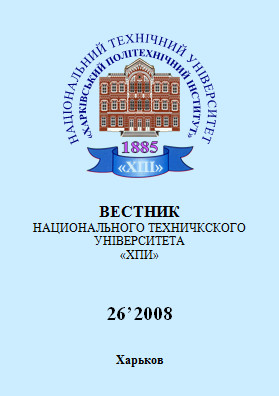Новый эвристический алгоритм раскраски графа
DOI:
https://doi.org/10.20998/%25xAbstract
В дискретной математике известны разные алгоритмы раскраски графов: точные, переборные, эвристические. Недостатком точных и переборных алгоритмов является то, что они характеризуются неполиномиальной сложностью от количества вершин в графе. Эвристические требуют меньших затрат времени, но не гарантируют получения оптимального решения. В предлагаемой статье описывается новый эвристический алгоритм раскраски графа, обладающий линейной сложностью. Качество окраски достигается выбираемым порядком обработки вершин.References
Кристофидес Н. Теория графов. Алгоритмический подход.– М.: Мир, 1978.- 432 с.
Новиков Ф.А. Дискретная математика для программистов.– С.-Пб.: Питер, 2004.- 364 с.
Downloads
How to Cite
Прокопенков, В. Ф., Кожин, Ю. Н., & Малых, О. Н. (2017). Новый эвристический алгоритм раскраски графа. Bulletin of National Technical University "KhPI". Series: System Analysis, Control and Information Technologies, (26), 190–194. https://doi.org/10.20998/%x
Issue
Section
SYSTEM ANALYSIS AND DECISION-MAKING THEORY
License
Copyright (c) 2017 Bulletin of NTU “Kharkiv Polytechnic Institute”. Series: System Analysis, Control and Information TechnologiesAuthors who publish with this journal agree to the following terms:
- Authors retain copyright and grant the journal right of first publication with the work simultaneously licensed under a Creative Commons Attribution License that allows others to share the work with an acknowledgement of the work's authorship and initial publication in this journal.
- Authors are able to enter into separate, additional contractual arrangements for the non-exclusive distribution of the journal's published version of the work (e.g., post it to an institutional repository or publish it in a book), with an acknowledgement of its initial publication in this journal.
- Authors are permitted and encouraged to post their work online (e.g., in institutional repositories or on their website) prior to and during the submission process, as it can lead to productive exchanges, as well as earlier and greater citation of published work (See The Effect of Open Access).


